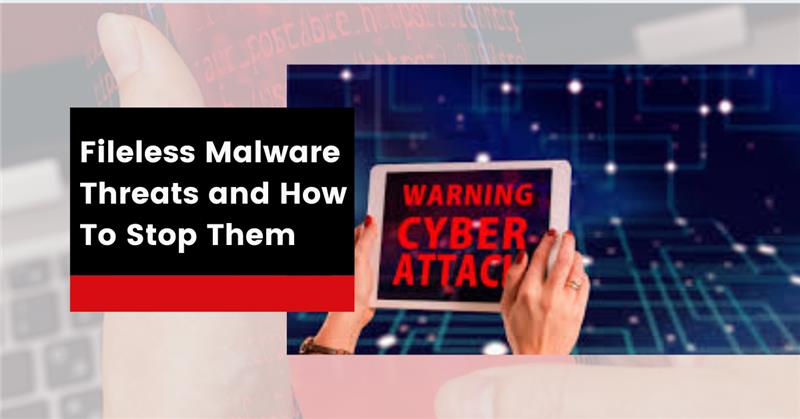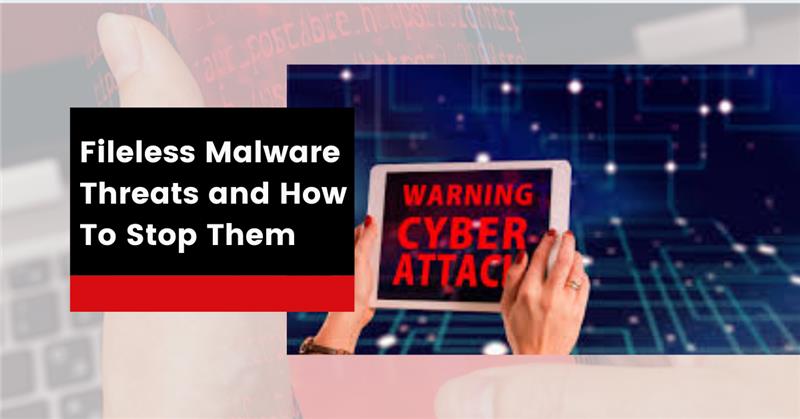
Malware has evolved since computing came into existence. It has also emerged and been more effective than any other cyber attack. One such malware attack is fileless malware, a challenging cybercrime with no identification or signals. This blog will explore what fileless malware is, how it works, the types of fileless malware, and tips to prevent it.
What Is Fileless Malware?
This malware is so pernicious because it hides in the system's RAM and turns the operating system against the user, paving the path for malicious actors to access the tools that users use daily. Moreover, it is immune to threat detection tools as it has no identification or signals. It is code that works directly on computer memory instead of infiltrating the hard drive. It uses authorized files to compromise the computer system. Your system gets infected without downloading any malicious files sent by attackers. Thus, it becomes difficult for traditional security tools to identify such attacks.
Although it is not impossible to identify this threat, its features, like exfiltrating, trigger the need for a scan. Thus, security experts like Network Support Los Angeles can start fileless malware mitigation steps, which involve scanning the program's command line.
How does Fileless Malware work?
Fileless malware doesn’t come from the hard drive. It hides in the computer's memory. It usually hides in the application most trusted by the end user, such as Windows’s Powershell. If it becomes challenging to identify the malware, it corrupts the trusted file and application. Fileless malware can bypass antivirus detection by altering the command line, which tells the computer what to do. This feature makes the malware stronger than any other.
Types Of Fileless Malware
Windows Registry Manipulation
This malware installs itself in the Windows registry to bypass the detection. Fileless malware uses a dropper program but doesn’t download and corrupt files. Moreover, it writes the malicious code directly in the Windows directory.
The malicious code is launched when the operating system is launched. This ensures that no malicious files are downloaded and that the code remains hidden in its original place. As this malware changes the registry, making it difficult for Antivirus to detect.
The oldest variant of registry manipulation is Poweliks. Gootkit and Kovert have emerged with time.
Memory Code Injection
As the name indicates, malware stays in memory only. For instance, the Duqu malware stays in memory only to remain undetected. The program picked by the attacker to run the malware is usually a critical part of the process. Codes are executed in this vital process to bypass detection. In many cases, attackers leverage vulnerable gaps in programs like Java, Windows, Flash, or any browser.
Vital Tips To Prevent Fileless Malware Attacks
Fileless malware can easily evade traditional security tools, making detection challenging. However, according to our expert cybersecurity consultants in Irvine, combining leading-edge technology with traditional security tools can defend your company from such malicious threats.
Here are tips to immune your business from evolving malware threats:
-
Monitor Your Vital Operating Systems and Tools
This malware attacks essential and regularly used tools such as Powershell and Windows.
-
Monitor user privileges regularly to identify unauthorized privileges.
-
While using Poweshell, execute the command remotely.
-
Look for suspicious activity in memory.
-
Identify if any suspicious modification has been made in the Windows registry.
-
Conduct Cybersecurity Awareness Program
Fileless attacks operate through social engineering techniques. It is vital to train employees in basic cybersecurity practices, such as staying mentally complete while clicking on any link or downloading any attachment and ensuring the site is authentic.
If you need to strengthen your security protocols to defend your business from malicious attackers, look for reliable cybersecurity services in Irvine, Orange County.
-
Stop Malware From Entering Your Operating System
Threat actors conduct fileless attacks by looking for vulnerable gaps in the operating system or finding unpatched and unprotected tools and applications. Thus, keeping your system patched and regularly conducting system updates is essential. This proactive measure can reduce the chance of cyber attacks.
-
Behaviors Analysis
Many a time, security tools can not identify such vulnerable attacks. Thus, conducting a behavior analysis to identify suspicious activity is crucial. For instance, looking at a user accessing a database that has never been accessed before or logging in to an account in unusual time.
Conclusion
Identifying vulnerable attacks like fileless malware is imperative to protecting your business environment from malicious actors. Once the operating system and data are compromised, businesses can incur substantial financial losses, which can detract from their competitors. Thus, it is vital to implement robust cybersecurity measures by outsourcing reliable cybersecurity services in Irvine. A reliable cybersecurity consultant will continuously monitor your system and look for suspicious activity to mitigate it before they become aware of it. Moreover, they help businesses by providing reliable cybersecurity training.
Stay secure and make cybersecurity a priority for your business.


